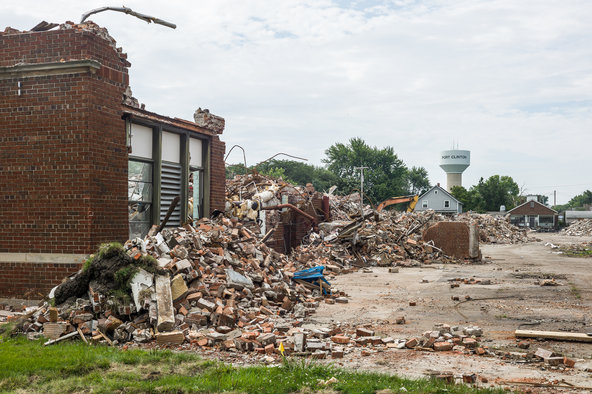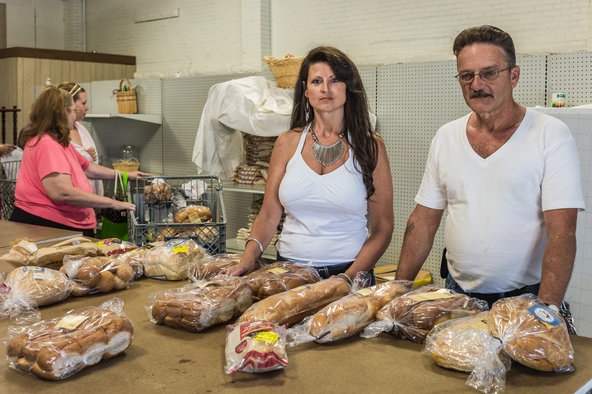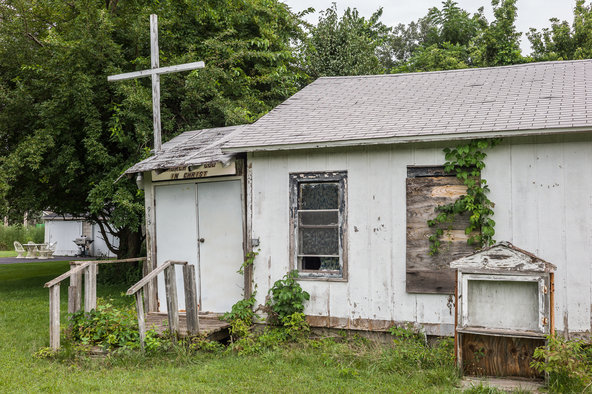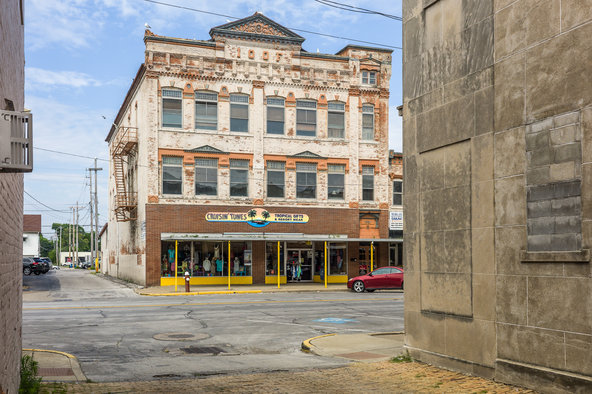Crumbling American Dreams
My hometown — Port Clinton, Ohio, population 6,050 — was in the 1950s a passable embodiment of the American dream, a place that offered decent opportunity for the children of bankers and factory workers alike.
But a half-century later, wealthy kids park BMW convertibles in the Port Clinton High School lot next to decrepit “junkers” in which homeless classmates live. The American dream has morphed into a split-screen American nightmare. And the story of this small town, and the divergent destinies of its children, turns out to be sadly representative of America.
Growing up, almost all my classmates lived with two parents in homes their parents owned and in neighborhoods where everyone knew everyone else’s first name. Some dads worked in the local auto-part factories or gypsum mines, while others, like my dad, were small businessmen. In that era of strong unions and full employment, few families experienced joblessness or serious economic insecurity. Very few P.C.H.S. students came from wealthy backgrounds, and those few made every effort to hide that fact.
Half a century later, my classmates, now mostly retired, have experienced astonishing upward mobility. Nearly three-quarters of them surpassed their parents in education and in that way advanced economically as well. One-third of my classmates came from homes with parents who had not completed high school and, of that group, nearly half went to college.
Low costs at public and private colleges across Ohio were supplemented by locally raised scholarships — from the Rotary Club, the United Automobile Workers, the Junior Women’s Club and the like. Although the only two black students in my class encountered racial prejudice in town and none of their parents had finished grade school, both reached graduate school. Neither for them nor for our white classmates was family background the barrier to upward mobility that it would become in the next century.
J’s rise from a well-knit but modest working-class family to a successful professional career was not atypical, as a recent survey of my classmates revealed. My classmates describe our youth in strikingly similar terms: “We were poor, but we didn’t know it.” In fact, however, in the breadth and depth of the social support we enjoyed, we were rich, but we didn’t know it.
As we graduated, none of us had any inkling that Port Clinton would change anytime soon. While almost half of us headed off to college, those who stayed in town had reason to expect a steady job (if they were male), marriage and a more comfortable life than their parents’.
But just beyond the horizon a national economic, social and cultural whirlwind was gathering force that would radically transform the life chances of the children and grandchildren of the graduates of the P.C.H.S. class of 1959. The change would be jaw dropping and heart wrenching, for Port Clinton turns out to be a poster child for changes that have engulfed America.
The manufacturing foundation of Port Clinton’s modest prosperity in the 1950s and 1960s began to tremble in the 1970s. The big Standard Products factory at the east end of town provided nearly 1,000 steady, good-paying blue-collar jobs in the 1950s, but the payroll was more than halved in the 1970s. After two more decades of layoffs and “give backs,” the plant gates on Maple Street finally closed in 1993, leaving a barbed-wire-encircled ruin now graced with Environmental Protection Agency warnings of toxicity. But that was merely the most visible symbol of the town’s economic implosion.
Manufacturing employment in Ottawa County plummeted from 55 percent of all jobs in 1965 to 25 percent in 1995 and kept falling. By 2012 the average worker in Ottawa County had not had a real raise for four decades and, in fact, is now paid roughly 16 percent less in inflation-adjusted dollars than his or her grandfather in the early 1970s. The local population fell as P.C.H.S. graduates who could escape increasingly did. Most of the downtown shops of my youth stand empty and derelict, driven out of business by gradually shrinking paychecks and the Walmart on the outskirts of town.
Unlike working-class kids in the class of 1959, many of their counterparts in Port Clinton today are, despite toil and talent, locked into troubled, even hopeless lives. R, an 18-year-old white woman, is almost the same age as my grandchildren. Her grandfather could have been one of my classmates. But when I went off to college on a scholarship from a local employer, he skipped college in favor of a well-paid, stable blue-collar job. Then the factories closed, and good, working-class jobs fled. So while my kids, and then my grandchildren, headed off to elite colleges and successful careers, his kids never found steady jobs, were seduced by drugs and crime, and burned through a string of impermanent relationships.
His granddaughter R tells a harrowing tale of loneliness, distrust and isolation. Her parents split up when she was in preschool and her mother left her
alone an
d hungry for days. Her dad hooked up with a woman who hit R, refused to feed her and confined R to her room with baby gates. She says her only friend was a yellow mouse who lived in her apartment. Caught trafficking drugs in high school, R spent several months in a juvenile detention center and failed out of high school, finally eking out a diploma online. Her experiences left her with a deep-seated mistrust of anyone and everyone, embodied by the scars on her arms where a boyfriend injured her in the middle of the night. R wistfully recalls her stillborn baby, born when she was 14. Since breaking up with the baby’s dad, who left her for someone else, and with a second fiancé, who cheated on her after his release from prison, R is currently dating an older man with two infants born to different mothers — and, despite big dreams, she is not sure how much she should hope for.
R’S story is heartbreaking. But the story of Port Clinton over the last half-century — like the history of America over these decades — is not simply about the collapse of the working class but also about the birth of a new upper class. In the last two decades, just as the traditional economy of Port Clinton was collapsing, wealthy professionals from major cities in the Midwest have flocked to Port Clinton, building elaborate mansions in gated communities along Lake Erie and filling lagoons with their yachts. By 2011, the child poverty rate along the shore in upscale Catawba was only 1 percent, a fraction of the 51 percent rate only a few hundred yards inland. As the once thriving middle class disappeared, adjacent real estate listings in the Port Clinton News Herald advertised near-million-dollar mansions and dilapidated double-wides.
The crumbling of the American dream is a purple problem, obscured by solely red or solely blue lenses. Its economic and cultural roots are entangled, a mixture of government, private sector, community and personal failings. But the deepest root is our radically shriveled sense of “we.” Everyone in my parents’ generation thought of J as one of “our kids,” but surprisingly few adults in Port Clinton today are even aware of R’s existence, and even fewer would likely think of her as “our kid.” Until we treat the millions of R’s across America as our own kids, we will pay a major economic price, and talk of the American dream will increasingly seem cynical historical fiction.
Do you agree with the writer? Can you relate with the story? Please comment below.
A version of this article appeared in print on 08/04/2013, on page SR9 of the National edition with the headline: Crumbling American Dreams.






Kankakee, IL could be substituted for Port Clinton. St. Louis, Mo, where I spent part of my childhood, is devastated but the enormous mansions of the uberrich still like Forest Park, along ‘private’ streets paid for with public tax money. There are concrete barriers along Delmar to dissuade the poor from driving into the prosperous neighborhood north .There is no sense of responsibility among the wealthy , enabled by politicians who have divorced social obligations from economic ambitions.